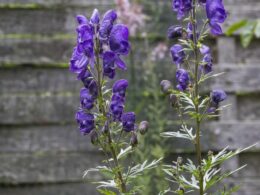What Is a Purple Passion Flower?
The purple passion flower (Passiflora incarnata) is a vine that produces beautiful purple flowers. This plant is perfect for those who want to add a touch of color to their garden. Passion flowers are also known for their medicinal properties and have been used to treat a variety of ailments such as anxiety, insomnia, and headaches. Passion flower plants are commonly used in landscaping, as they can add a touch of tropical flavor to any garden.
Purple Passion Flower Appearance
The purple passion flower is a vigorous vine that can reach up to 25 feet in length. The leaves are large and lobed, and the flowers are purple with yellowish centers. The flowers are followed by small, egg-shaped fruits that are edible.
Purple Passion Habitat
The passion flower plant is a woody vine that is native to the tropical regions of South America, but can be grown also in North America and Mexico. It gets its name from the unique appearance of its flowers, which are said to resemble the crucifixion of Jesus Christ. The plant is also known for its large, fleshy leaves and its brightly colored fruits.
Cultivation
Passion flowers are native to the southeastern United States, but they can be grown in any climate zone as long as they are given enough sun and water. Passion flowers prefer rich, well-drained soil and should be fertilized monthly during the growing season
Flowers and Fruit
Passion flowers are known for their beautiful, fragrant flowers. The purple passion flower blooms from late spring to early summer and produces small, egg-shaped fruits that are edible when ripe.
Uses
Passion flowers have a long history of use in folk medicine. The leaves and roots of the plant are used to make teas that are said to relieve anxiety and insomnia. Passion flower extract is also commonly used in herbal supplements and is said to be effective in treating headaches and nervous disorders.
Passion flowers are also grown as ornamental plants and can be used to add color and interest to gardens. The vines can be trained to grow on trellises, fences, or other support structures. Passion flowers make excellent cut flowers and can be used in fresh or dried arrangements.
Negative Effects
Passion flowers have been used for centuries in traditional medicine, but the fruits of these plants can also be harmful if consumed in large quantities. The purple passion fruit, in particular, contains high levels of cyanogenic glycosides, compounds that can release cyanide into the body. While the fruit is not poisonous, it can cause some adverse effects if consumed in large quantities. The most common side effect is nausea, but the fruit can also cause vomiting, dizziness, and headaches.
Growing Conditions
The Purple Passion Flower is a beautiful and unique plant that can be tricky to grow. In its native habitat of South America, it prefers warm, humid conditions with plenty of rainfall. However, it can also tolerate periods of drought. In cooler climates, the Purple Passion Flower is best grown in a greenhouse or conservatory, where it can be protected from cold weather. When grown outdoors, it should be in a sheltered spot with full sun and well-drained soil. With the right care, the Purple Passion Flower can thrive in a wide range of conditions and make a stunning addition to any garden.
Temperature and Sun Exposure
The purple passion flower is a tropical plant that thrives in warm, humid climates, with the temperature reaching 60-75 °F. They thrive in full sun, and they do not have high watering requirements.
Biotic Pollination
The purple passion flower is a beautiful plant that relies on biotic pollination from butterflies. The flowers are delicate and have a sweet nectar that attracts the butterflies. The butterflies drink the nectar and then transfer pollen to the pistils of the flower, fertilizing the plant. This process is essential for the plant to reproduce. In return for their services, the butterflies receive a nutritious meal and helps to ensure the survival of the species.


















